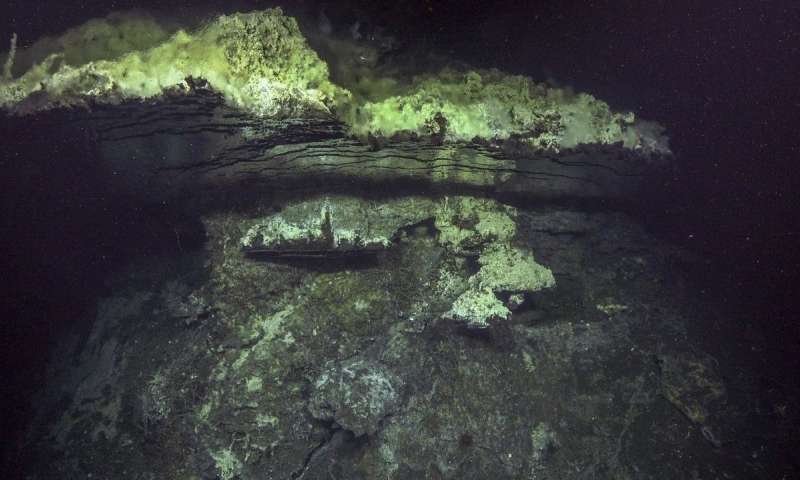A weird wonderland of new ocean life has been discovered in the depths of the Gulf of California.
The otherworldly ecosystem was recently explored by scientists from the US and Mexico. Their expedition focused on a previously uncharted hydrothermal vent field—an area on the seafloor where volcanism has heated the water—in the Pescadero Basin near the Baja Peninsula.
Videos by VICE
Here, the team found holes in the seafloor “gushing high temperature fluids,” and steaming sediments “laden with orange-colored oil and the rotten-egg stink of sulfide. The researchers also captured footage of strange upside-down lakes and waterfalls, formed as superhot fluids poured out of a vent and pooled beneath the lip of an underwater cavern.

“The deep ocean is still one of the least explored frontiers in the solar system,” Robert Zierenberg, principle investigator and emeritus professor at the University of California Davis, said in a statement on Thursday.
“Maps of our planet are not as detailed as those of Mercury, Venus, Mars, or the moon, because it is hard to map underwater,” Zierenberg said. “This is the frontier.”
The team named the new vent field Jaich Maa, meaning “liquid metal” in languages indigenous to the Baja Peninsula.

One of the standout features of Jaich Maa was a huge calcite cavern called Tay Ujaa, or “big cave,” said scientists from Schmidt Ocean Institute who were part of the expedition. It contained a pool of metallic shimmering water—an effect created by the high temperature hydrothermal fluid—that flowed over the rim and into an upside-down waterfall.
The team mapped the terrain at a centimeter-scale resolution using an ROV, or remote operated vehicle.
They also took samples of alien-looking organisms, such as fuzzy blue microbes and Xenoturbella, a marine worm that’s been affectionately compared to a “crumpled sock.” Researchers are confident that new species will be identified through DNA analysis yet to come.

The more than 500 degree Fahrenheit waters around the hydrothermal vents were teeming with other species, too—tubeworms, anemones, and blue scale worms.
Thermophilic, or heat-loving, organisms are fascinating to scientists as they test the extreme limits of life on Earth. Also known as extremophiles, some deep sea creatures and their unique existences can provide an analog for possible life on other planets as well. Those which metabolize methane, for example, are key to the hunt for life on Mars and Enceladus where methane has been detected.
The Pescadero Basin was first discovered in 2015 by a Monterey Bay Aquarium Research Institution expedition. This current expedition was led aboard the Schmidt Ocean Institute vessel Falkor.




